Childhood drowning in Bangladesh is so common that it’s a public health problem.
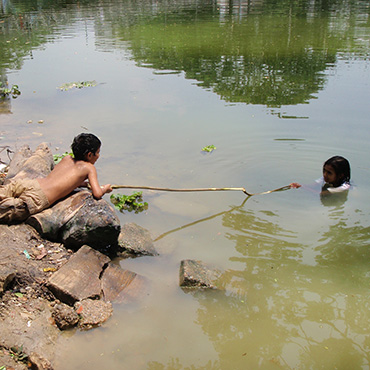 Young drowning victims usually fall into one of the many bodies of water – some stagnant, others flowing – that cover much of the country’s rural landscape. Often, the only way to navigate around these ponds and streams is on narrow walking paths that fall off sharply to either side. Other times, the most convenient thing to do is to walk across slippery, narrow poles that serve as footbridges.
Young drowning victims usually fall into one of the many bodies of water – some stagnant, others flowing – that cover much of the country’s rural landscape. Often, the only way to navigate around these ponds and streams is on narrow walking paths that fall off sharply to either side. Other times, the most convenient thing to do is to walk across slippery, narrow poles that serve as footbridges.
“The drowning fields”: that’s what Steve Beerman, Clinical Professor in the Department of Family Practice and Nanaimo Site Director for Family Practice residency, calls it. And he has been working to shrink the death toll, which is about 27 times the rate in Canada.
His work in Bangladesh is a direct extension of a lifetime of preventing deaths in the water: as a lifeguard and swimming instructor in Powell River, an emergency department physician in Nanaimo, a part-time researcher into medical care for near-drowning victims, and a leader of several water safety organizations.
With collaborators in Bangladesh, they undertook a demonstration project in one village, in which 2,000 children were taught basic survival skills – how to keep their heads above water for 30 seconds, how to propel themselves 25 metres, how to upright themselves. The lessons took place within scaffold-like bamboo structures along the edges of ponds, so that children learned to swim in the water that is part of their everyday environment.
“We believe this is an immunization against drowning for life,” Dr. Beerman says.
For children too young for those lessons, Dr. Beerman and his partners created a system of backyard day care centres, called anchals. Being kept under the watchful eye of an adult, in a secure area for a large part of the day was a dramatic change for most children, and minimized their contact with the bodies of water surrounding them, as well as other potential hazards, such as poisons or downed electrical wires.
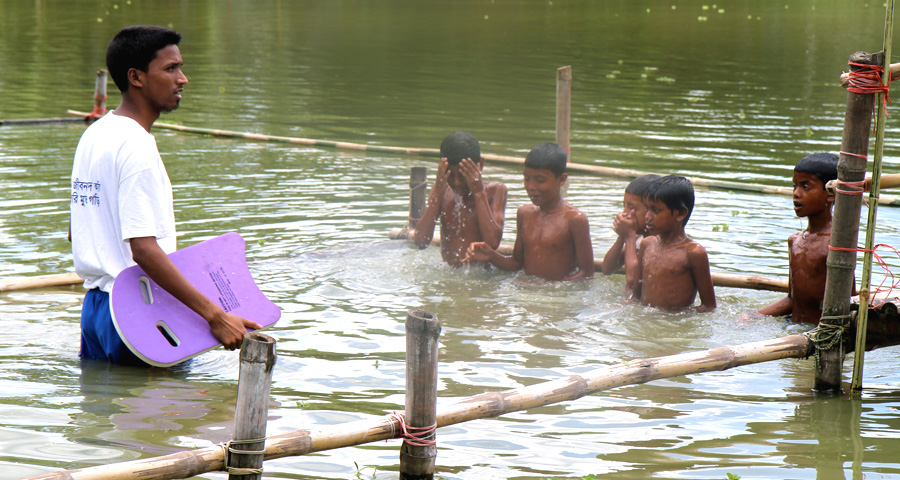
We believe this is an immunization against drowning for life.
– Steve Beerman, Clinical Professor in the Department of Family Practice
That demonstration project, funded by Grand Challenges Canada, laid the groundwork for two other scaled-up efforts: a $20 million project by The Johns Hopkins University and funded by Bloomberg Philanthropies, and a $30 million project by the Royal National Lifeboat Institution and the George Institute. Dr. Beerman meets regularly with the research teams of both projects, and helped them convince the funders that this was a worthwhile investment.
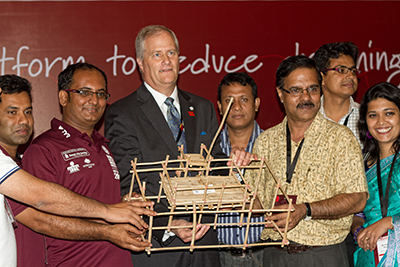
Steve Beerman (centre) and Bangladeshi collaborators show off a model of the bamboo support structures that will be used for water survival instruction.
Dr. Beerman’s team, with host nation partner the Centre for Injury Prevention Research, Bangladesh and the government of Bangladesh, is following the children in Raiganj to assess the long-term impact of their intervention (it’s still too soon, given the size of the sample). They also demonstrated the feasibility of teaching cardiopulmonary resuscitation to 7- to 9-year-old Bangladeshi children.
“It was gratifying to see much larger, well-funded organizations take up this effort,” Dr. Beerman says. “And because of that, the Bangladeshi government has also joined in, declaring that all children will learn these safety lessons in school, and providing funding for some of the day care centres. They are becoming more engaged in making drowning risk reduction a widespread, permanent part of growing up, and want to do that without continued assistance from abroad.”
Related Stories: Giving Back
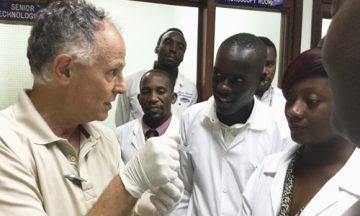
Back to the basics
UBC’s Ed Conway is tackling hemophilia in Uganda using ‘older’ and ‘better’ technology Read More >
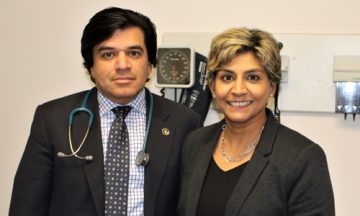
Changing lives — one diagnosis and lesson at a time
The vast majority of adults with ADHD don’t even know they have it. Drs. Gurdeep and Anita Parhar are working to change that. Read More >
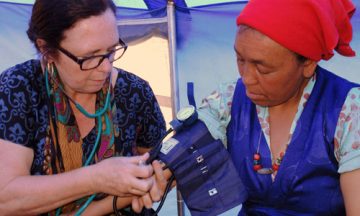
Improving maternal health at home and abroad
A conversation on global maternal health with UBC Midwifery Instructor Cathy Ellis. Read More >
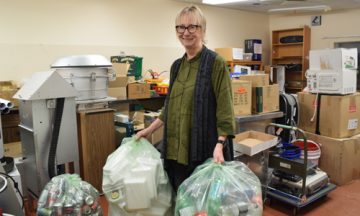
Giving back by taking rubbish – and recycling it
SPPH Professor Karen Bartlett creates own initiative to shrink the school’s environment footprint. Read More >
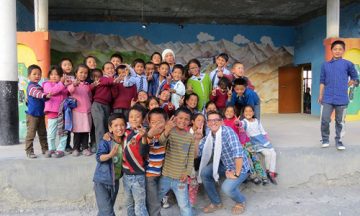
MD student Max Moor-Smith talks about his summer research project in India
Second-year medical student Max Moor-Smith shares his experience providing health education for children in Spiti Valley, India. Read More >
